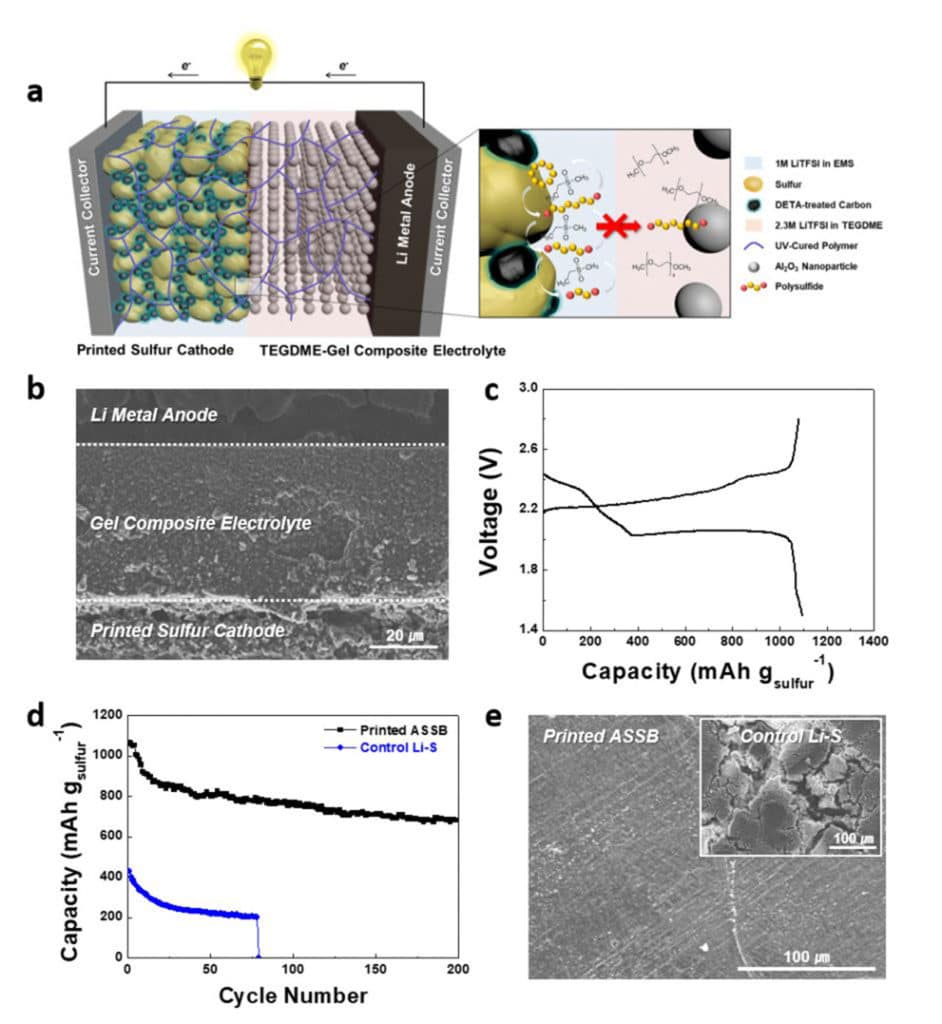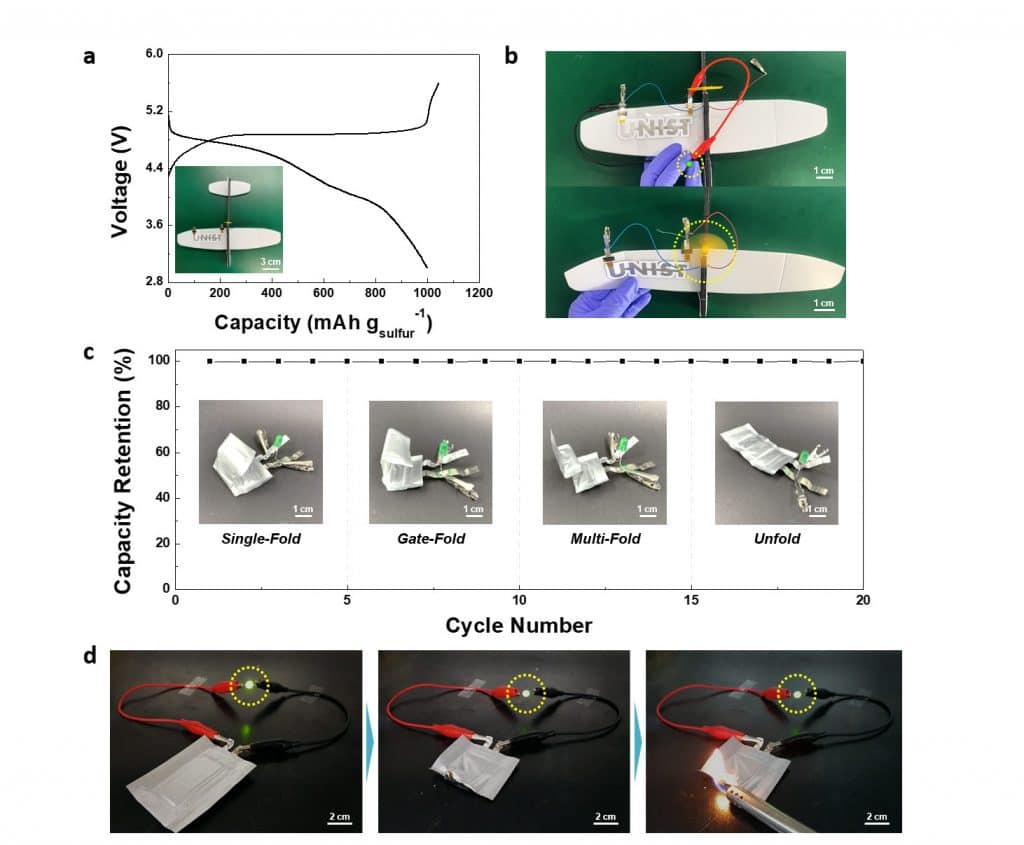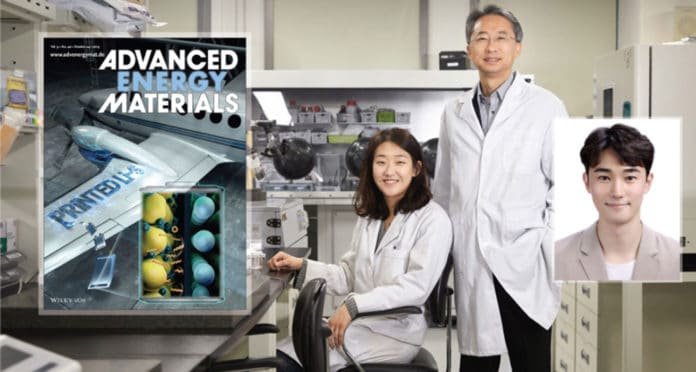Scientists have developed new ultrahigh-capacity and fire-resistant all-solid-state printed bipolar Li-S batteries with improved performance and safety. Key technologies incorporate the “printing process,” which produces batteries as though letters or pictures are imprinted on objects, and the double-layer polymer electrolyte,” which solves the battery life reduction, an interminable issue of lithium-sulfur batteries.
Lithium-sulfur batteries use lithium as a negative electrode material and sulfur as a positive electrode material. Even though the energy density is around multiple times higher than that of a lithium-ion battery, sulfur compounds (polysulfide) produced during the charging and releasing procedure weakens the presentation of the battery.
The sulfur compound moves to the cathode, creating a thin film on the surface of the cathode, obstructing the development of lithium ions responsible for the progression of power.

Se-Hee Kim, the first author of the study, said, “Lithium-sulfur cells with double-layer solid electrolytes have a more than double life cycle compared to lithium-sulfur cells with conventional liquid electrolytes. It is a solid electrolyte but uses a softly bent gel to increase the mechanical and chemical stability of the battery. It is also easy to increase the operating voltage because several cells can be connected in a series.”
The gradual printing process has many benefits, such as various shapes of cells that can be manufactured directly in the desired place, thus freeing up square batteries.

In this study, scientists created an alphabetic lithium-sulfur battery on the wing of a curved plane.
Professor Sang-Young Lee in the School of Energy and Chemical Engineering at UNIST said, “This research presented a new concept of making “high capacity, high safety all-solid-state battery, one of the biggest concerns in the secondary battery field. The resulting bipolar ASSLSBs showed exceptional advances in form factors, mechanical flexibility, and safety, which have not been achieved in previously reported ASSLSBs.”
“We anticipate that the printed bipolar ASSLSB strategy can provide a simple and scalable route toward the realization of practical ASSLSBs.”
The study is published in the journal Advanced Energy Materials.
